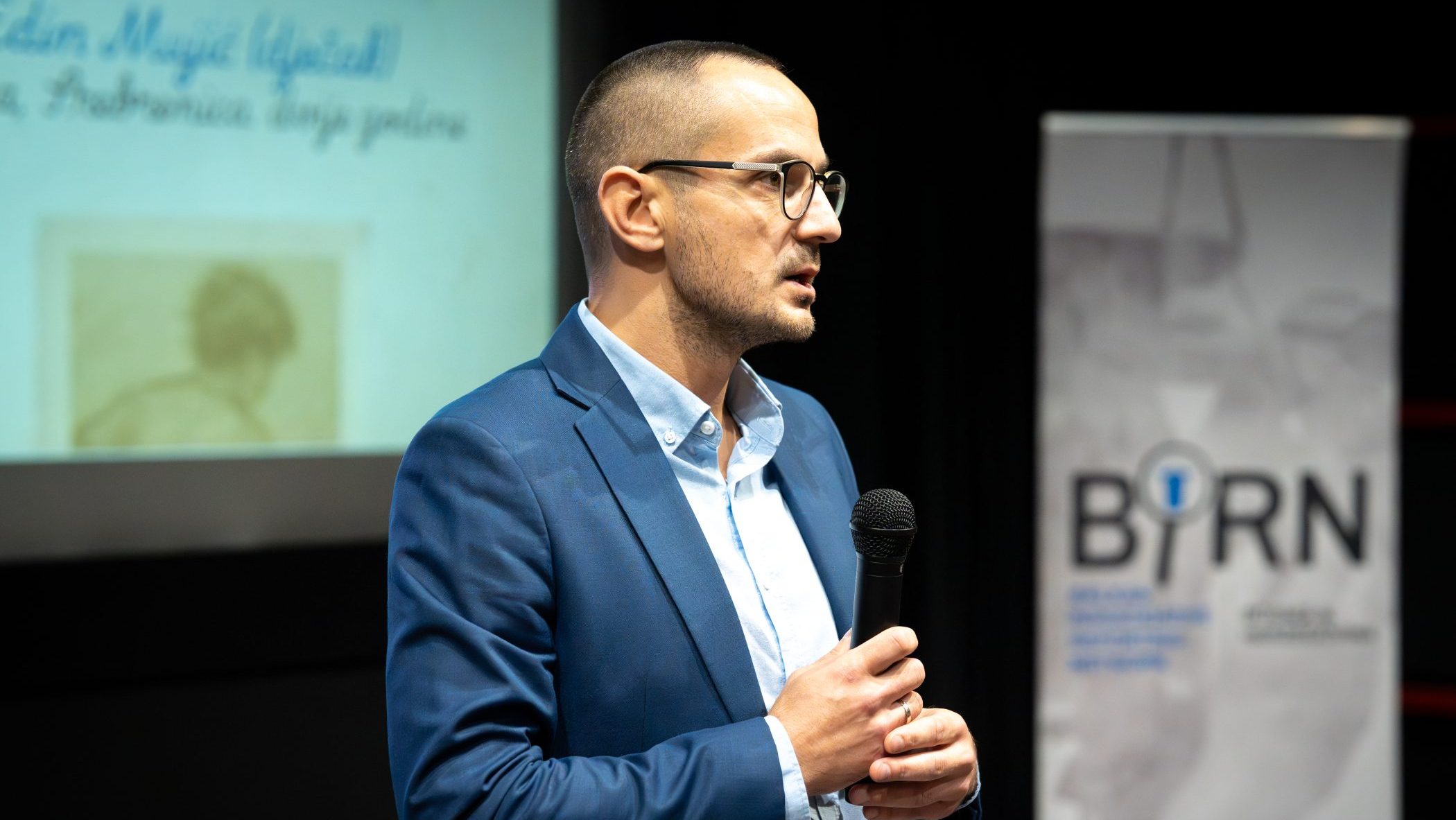This post is also available in: Bosnian
Aleksandar Tesic, former municipal Secretary for National Defence in Bratunac, told the Tribunal that he worked with the Military Department in Bratunac in 1995 and that, while driving recruits to Zvornik by bus in the morning hours on July 14, he saw corpses in front of the warehouse in Kravica.
I did not see the actual executions. When I passed by, I saw hustle and many soldiers on the road.
Many corpses were lying next to the Co-operative building wall. Indeed, even when I think about it now and imagine it in my head, it was a real shock for me and those young guys. I think that there were between 200 and 300 corpses and that the pile was a metre and a half-high, so, as I was passing by, I got an impression that it was a stack of logs. When we approached them, I realised that those were people We passed by them slowly. It was horrible, Tesic said.
Karadzic, former President of Republika Srpska, is charged with genocide against more than 7,000 Bosniaks from Srebrenica, whom the Republika Srpska Army shot in the days that followed the occupation of the United Nations protected enclave on July 11, 1995. According to the charges, the massacre of 1,000 Bosniaks in Kravica was the first in a series of mass murders of prisoners.
Tesic said that he did not recognise anyone from Bratunac among the soldiers, who were in various uniforms. When asked why he did not stop the bus and inquire what was going on, he said that he did not do it, among other things, because he was afraid of those people.
As the hearing continued, Karadzic presented the judges with demographic expert Stevo Pasalic. While denying the findings made by Hague Prosecutions demographic experts related to changes in the population of Bosnia and Herzegovina during the war, Pasalic said that they were tendentious and based on wrong samples, adding that the experts failed to consider all the significant causes of changes in the composition of the population.
According to Pasalic, when determining the number of deaths during combat, the Prosecution experts did not differentiate between civilians and soldiers due to tendentious reasons and did not consider the fact that mortality rates increased during wars for other reasons as well. Pasalic said that the findings related to movement of the non-Serb population from 20 Bosnian municipalities, which are mentioned in the indictment charging Karadzic with persecution, are not usable for those same reasons and create an incorrect historical and demographic picture.
Speaking about Prosecutions demographic reports on Srebrenica, Pasalic said that they were wrong, because no reliable sources for them existed.
The witness said that an ethnic and territorial homogenization had been ongoing in Bosnia and Herzegovina since the 1970s, adding that the war did not cause it, but it did expedite it. Pasalic said that the immigration to Republika Srpska had been constantly increasing since the end of the war, just like the number of departures from the Federation of Bosnia and Herzegovina.
The return to Republika Srpska has practically been completed, the Defences expert said, mentioning that 25,000 Bosniaks had returned to Zvornik municipality so far. On the other hand, Pasalic said that Serbs made only 3 percent of the total population in the Federation, although they made up 17 percent prior to the war.
While being cross-examined by prosecutors, Pasalic agreed that ethnic cleansing conducted during the war was a part of the ethnic homogenization, but he pointed out that not everything can be called ethnic cleansing and that it was not a global phenomenon in Bosnia and Herzegovina during the war.
The trial of Karadzic, who is also charged with terrorising civilians in Sarajevo through long-lasting shelling and sniping and taking UNPROFOR members hostage, is due to continue on Thursday, March 14.

